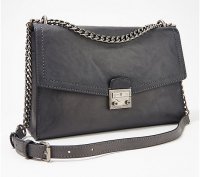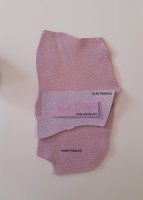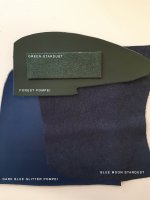The shiny hardware on handbags is plated brass, i.e. brass covered with other metal alloys to look shiny and give the appearance of precious metals (silver, gold...). These shiny plated surfaces are always prone to scratching and wear. The cheaper the hardware, the poorer the quality, the more prone to scratching. Marco uses top-notch hardware.
Plain brass hardware has no metal plating on the surface so it is far less shiny. It can have a brushed or a completely smooth surface.
View attachment 4934297View attachment 4934292View attachment 4934291View attachment 4934288
Uncovered brass does tarnish, which gives it a rustic, aged patina.
View attachment 4934327
In fact, most brass hardware used for bags comes pre-tarnished from the factory.
On plain brass items where the designer does not want tarnishing, for instance some lamps or door bells, the brass is laquered to protect the surface from the air. Weirdly, most pre-tarnished hardware is also laquered! Probably to regulate the degree of tarnishing. It is a very fine, invisible but tough layer of laquer, and in my experience it causes no issues. As this laquer gradually wears away, the tarnishing will increase, adding to the vintage appearance.
Theoretically, one can polish off the tarnish. But on an exposed brass surface the tarnish will return. On handbags, the rub of the leather and our clothes will polish off some of the tarnish on prominant parts of the hardware.
Just like plated brass, plain brass does scratch.
Personally, I think scratches look fine on plain brass (just adds to the rustic, vintage look) but I am always a bit upset when I notice new scratches on my shiny, plated hardware...
Thanks for the very detailed explanation. I equate weight with quality and I must say all of Marco's hardware feels very solid. I do get why the plain brass will look good in more rustic bag styles, but I generally shy away from rustic or rugged bags anyway. Plain brass is not for me, I like shiny hardware.

 .
.



